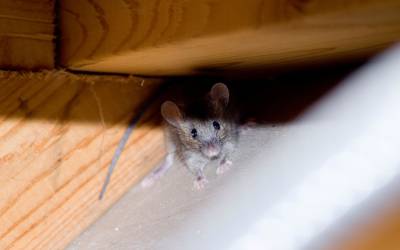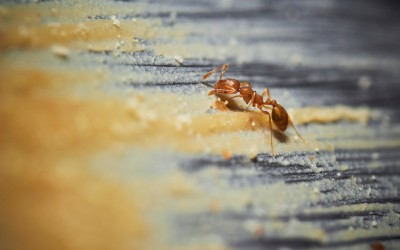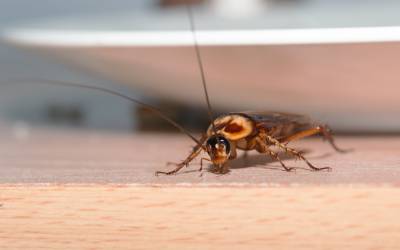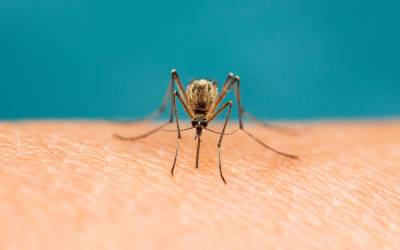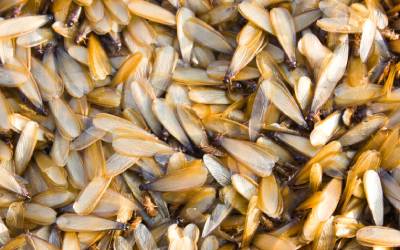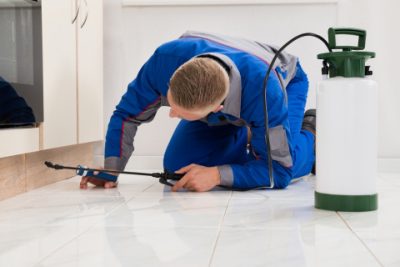Rat and mouse poop, from a distance, they can look like tracks of dirt. It’s upon closer inspection that you can determine whether or not it’s evidence of a rodent infestation. It’s not pleasant to have any kind of animal leavings in your home – but act carefully. You can’t sweep up rodent droppings like you would other forms of poop. It might look easy, but it’s actually a health hazard. At Garrie Pest Control we’re experts on rodent control in the Lower Hudson Valley, and if you have evidence of a rodent infestation, we can help. Before that happens, though, you may want to know for certain if the droppings in your home are mouse or rat poop. We can tell you the indicators, how to clean their mess safely, and what our expert exterminators can do to help.
What Does Rodent Poop Look Like?
Though they’re both considered rodents, rats and mice are very different creatures with different habits. Mice are tidy poopers that tend to designate a particular space outside the nest to serve as their toilet. This might look like your silverware drawer, or in the space behind where you store your food. Mouse droppings are small and brown – similar to cockroach poop, only pointed at either end like a grain of rice. Rats, on the other hand, drop much larger pellets shaped like a grape or coffee bean. They are sometimes mistaken for squirrel poop, only squirrel poop is rounded and will lighten over time. And while mice will pick a place to defecate in, rats will spread their waste everywhere they go.
Whether mouse or rat, rodent droppings are unpleasant and frustrating to come across. But before you reach for the broom or vacuum, stop and breathe a second. There’s a better way to clean it up.
How to Clean Mouse and Rat Poop
Most feces carry some kind of illness-causing bacteria, and rat and mouse droppings are no exception. One of the most dangerous possibilities that can come from exposure to rodent droppings is the threat of Hantavirus. Hantavirus Pulmonary Syndrome is a respiratory disease that is transferred from rodents to humans and which has a fatality rate of 38%. At first symptoms present like the flu or a bad cold, with a fever and fatigue, but if left untreated it could result in your lungs filling with fluid. Not all rodent droppings are infected. If they are, though, and you disturb them with a broom or vacuum cleaner, you’ll be sending virus particles into the air. So, what should you do instead?
First, you’ll need protective gear, mainly eye goggles, a face mask and plastic or rubber gloves. Spray the area, droppings and urine, with bleach or a disinfectant and allow it to soak for five minutes. Then you can wipe the mess with a paper towel and throw it away, along with your mask and gloves. After that, you can continue cleaning as you usually would for the area in mind. But before you do that, you should take a moment to call a professional rodent exterminator like the ones at Garrie Pest Control.
Garrie Pest Control Rodent Exterminators
For over 50 years, Garrie Pest Control has been helping to keep homes and businesses in the Lower Hudson Valley pest-free. We know the damage that rats and mice can cause if left untreated. They can tear through your insulation, wood and wiring – causing risk of an electrical fire. Rodents can ruin your belongings and contaminate your food. To put it simply, they are trouble, and our team knows exactly how to deal with them. Your Garrie Pest Control expert will craft a removal and prevention plan that’s personalized for you, and your home’s needs. When we’re done, you’ll be able to live with the ease and comfort that comes from not always being on the lookout for mystery poop. To get started, contact us today!

